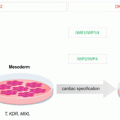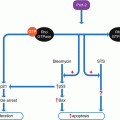Drug
Important adverse effects/contra indications
Sodium nitroprusside
Hypotension, reflex tachycardia, metabolic acidosis, weakness, psychosis, headache, thyroid suppression, nausea, sweating, cyanide and thiocyanate toxicity
Infusions at high doses and over a long duration, up to 48 or 72 h, may cause accumulation of toxic cyanide and/or thiocyanate (which may in metabolic acidosis, altered mental status, and clinical deterioration), and should be avoided
An additional impairment of liver or kidney increases the risk of accumulation and intoxication, and necessitates dose adjustment.
Contraindicated in patients with reduced cerebral perfusion
Should be avoided in patients with coarction of the aorta and atrioventricular shunts
Labetalol hydrochloride
Bradycardia, bronchospasm, atrioventricular block, worsening of heart failure, ventricular arrhythmia, prolonged hypotension, increased risk of hyperkalaemia, worsening of renal function, hepatocellular necrosis, and chronic active hepatitis;
Should be avoided in patients with asthma, chronic obstructive lung disease, heart failure, bradycardia, or greater than first-degree heart block
Esmolol
Hypoglycemia, hypotension, nausea, vomiting, depression, phlebitis, bronchospasm, heart block, bradycardia, and negative inotropic effect;
Contraindicated in patients with cardiogenic shock, heart block, severe asthma, or chronic obstructive lung disease
Metoprolol
Conformable to those of labetalol
Urapidil
Severe hypotension, dizziness, nausea, giddiness, headache, fatigue, and palpitations
Hydralazine
Reflex tachycardia, increase in cardiac contractility, sodium and water retention, headache, elevation of intracranial pressure, lupus erythematosus, vasculitis, glomerulonephritis, and aggravation of angina;
Contraindicated in patients with coronary artery disease, dissecting aortic aneurysm, cerebral vascular accidents, cerebral edema and encephalopathy
Diazoxide
Tachycardia, heart failure, pulmonary hypertension, respiratory failure, fluid retention, hyperglycemia, hirsutism, seizure
Enalapril
Prolonged hypotension, renal failure (especially in neonates), neutropenia, hyperkalaemia, hypoglycaemia, febrile convulsion, bronchopneumonia, bronchial obstruction, and exacerbation of asthma;
Contraindicated in patients with bilateral renal artery stenosis
Clonidine
Orthostasis, bradycardia, atrioventricular block, significant sedation, dizziness, fatigue, constipation, anorexia, and arrhythmia
Fenoldopam
Hypotension, tachycardia, t-wave flattening, angina, arterial fibrillation, flatter;
Should be avoided in patients at risk for intraocular hypertension and intracranial hypertension
Nifedipine
Symptomatic hypotension, reflex tachycardia, arrhythmias, bone marrow suppression, alteration in mental status, and oxygen desaturation;
The combination of cyclosporine and nifedipine may increase the incidence as well as the severity of gingival overgrowth
Should be avoided in patients with acute CNS injury
Nicardipine
Conformable to those of nifedipine
Clevidipine
Conformable to those of nifedipine
The rapid onset of action and its short half-life makes sodium nitroprusside a valuable drug in most cases of hypertensive emergencies, but in those with a renal etiology it appears less adequate. The risk of an additional deterioration of renal function can not be compensated by a simultaneous infusion of thiosulfate, because children after stem cell transplantation tend to ascites and fluid overload. In those patients, sodium nitroprusside is the last resort in treatment. It should be used only for short periods of time and be limited to situations where no other suitable drugs are available.
Beta-Adrenergic Receptor Antagonists
Labetalol hydrochloride is a widely used selective alpha1– and non selective beta-adrenergic receptor antagonist. It can be administered either orally, as a continuous infusion or as an intravenous bolus injection. Due to its antagonistic effects on alpha1-receptors, it leads to vasodilatation and the beta-adrenoceptor effects result in a decreased myocardial contractility. Labetalol hydrochloride has approximately no effect on cardiac output. It reduces the systemic vascular resistance without reducing peripheral blood flow. The heart rate is either maintained or slightly reduced. Intracranial pressure is unaffected. The inactive metabolites are excreted in urine, feces, and bile. The lipohilic drug labetalol is metabolized via glucuronidation. As glucuronidation pathways are not fully matured in infants and small children (Benedetti and Baltes 2003), labetalol achieve sufficient concentrations at lower doses in this population. As metabolism is the main route of excretion of labetalol, renal failure has no significant effect on plasma half-life, clearance, or apparent volume of distribution. Labetalol hydrochloride has a relatively slow onset of action and reaches its peak effect of hypotension in about 10 min. Hypotension can last for up to 4 h. Besides the most common side effects, labetalol hydrochloride may increase the risk of hyperkalaemia and acute renal failure may occur in cases associated with overdoses. Recent literature report partially fatal hepatocellular necrosis and chronic active hepatitis associated with the use of labetalol. It led to its withdrawal from sale in Germany in the early 1990s.
Published information about the administration of labetalol hydrochloride in paediatrics is scant, although it is widely used. In one retrospective chart review (Thomas et al. 2011) continuous infusions of labetalol hydrochloride, nicardipine and sodium nitroprusside were compared in 27 paediatric patients aged less than 24 months concerning their efficacy and safety. Fifeteen patients received labetalol, six received nicardipine, and four received nitroprusside. They found no significant difference of a continuous infusion of labetalol in efficacy and adverse effects compared with nicardipine and nitroprusside. Labetalol produced a mean blood pressure lowering effect of at least 20% in all blood pressure measurements within 8 h. Blood pressure reduction was sufficient up to doses of 0.59 mg/kg/h, with a little benefit a higher doses. Despite the wide use of labetalol hydrochloride in paediatrics, actual publications could not rule out the possibility of worsening renal function and an additional injury of the liver by this drug. Due to this risk, it appears not suitable to apply labetalol in critically ill children.
Esmolol is a pure cardioselective beta1-blocker. It decreases blood pressure by reducing heart rate and myocardial contractility, and thus cardiac output. It has no direct vasodilatory effect, and is particularly beneficial when there is associated tachycardia (Chandar and Zilleruelo 2011). The important traits of esmolol are the very short onset of action after intravenous application and its short half-life making therapy easy to control. It acts within 60 s or less and due to its fast metabolism, hypotension can last only for 10–20 min. Up to now, no clear dose-effect relationship has been published. Esmolol metabolism does not depend on renal or hepatic function and is based on intracytoplasmic red blood cell esterases via rapid hydrolysis of ester linkage. This makes the drug potentially well-suited for critically ill patients with multiorgan failure (Flynn and Tullus 2009), but particular care is necessary in any prerequisite that causes anaemia, because a prolonged half-life of esmolol can occur. Esmolol can cause congestive heart failure, bradycardia, and bronchospasm. Its contraindications are those expected from a beta-adrenergic blocker. The data on paediatric use of esmolol are mainly based on small clinical trials and case reports. In the US, a paediatric trial was completed, but no paediatric labelling has been approved by the FDA (Flynn and Tullus 2009). This still induces some doubts about its suitability.
Like esmolol, metoprolol is a selective beta1-blocker decreasing heart rate, myocardial contractility, and cardiac output without any direct venous dilation. The peak effect after intravenous application occurs within 10 min after administration. Compared to esmolol it has a longer half-life of about 3–5 h and undergoes an extensive hepatic metabolism via cytochrome P450 isoenzyme 2D6, entailing the capability of essential drug-drug interactions. The side effects of metoprolol are similar to those observed with of labetalol and esmolol.
In current publications, there is only one case report about the paediatric use of metoprolol in a hypertensive emergency in a 12-year old female (Liesemer and Mullen 2009). The girl received intravenous metoprolol 2.5 mg 3 times at intervals of 5 min, resulting in a decline in heart rate and blood pressure, and subsequent resolution of electrocardiogram changes. Apart from this, no further published experiences with paediatric use of intravenous metoprolol can be found. The tenuous data on paediatric use of intravenous metoprolol, its long half-life and its metabolism through CYP 2D6 makes its use in hypertensive emergencies at least questionable. Other drugs should be preferred in this indication.
Urapidil
Urapidil reduces blood pressure by decreasing vascular resistance, mainly due to its postsynaptic alpha1-adrenoceptor antagonism. It inhibits the vasoconstrictive action of catecholamines and has an antagonistic effect on central 5-hydroxytryptamine (5-HT)1A-receptors. This explains the absence of a sympathetic nervous system response like reflex tachycardia. Urapidil has no effect on intracranial pressure. It acts in about 3–10 min. The hypotensive effect lasts for a minimum of 30 min up to 6 h. Urapidil has a half-life of about 5 h and undergoes an extensive hepatic metabolism. It does not affect lipid or glucose metabolism, nor does it impair renal function.
Despite the wide use of urapidil both in adults and children, the published facts about the paediatric use are extremely limited. Only one clinical trial concerning its use for the treatment of acute hypertensive crises in 19 infants and children can be found (Schöber et al. 1984). In all cases, a prompt decrease in systolic, mean and diastolic blood pressure was achieved within the first 15 min and the effect lasted throughout the whole time of continuous venous infusion of urapidil. The authors report a slow increase in serum potassium and a decrease in serum sodium being significant only after at least of 12 h of therapy. There was no change in heart rate and urine volume.
The wide use of urapidil especially in Germany seems to be based on its good tolerance and the experiences of the attending physicians. The long half-life of 5 h, and especially the scarce published data about the paediatric use still raises questions about its suitability. Without further publications about its controllability and safety in children no recommendation can be made.
Direct-Acting Vasodilators
Hydralazine is a direct vasodilator of arteriolar smooth muscle that decreases systemic blood pressure. It can be administered either as intravenous bolus or intramuscular injection. The mechanism of action is still unexplained, but consists most likely in an alteration of intracellular calcium metabolism, leading to an interference with the calcium movements within the vascular smooth muscle that are responsible for initiating or maintaining the contractility. Hydralazine has an onset of action that occurs within 5–30 min after intravenous administration. Hypotension can last for up to 12 h. The use of hydralazine is accompanied by potential side effects. It stimulates the central nervous system which causes reflex tachycardia and an increase in cardiac contractility. Besides others the activation of the renin-angiotensin-aldosteron system, sodium and water retention, elevation of intracranial pressure and drug-induced lupus erythematosus, vasculitis and glomerulonephritis has been reported.
The published data about the use of hydralazine in children is scant, most likely because the drug is used primarily in pregnant woman with preeclampsia. The extremely long half-life can result in an unpredictable effect on blood pressure, limiting its controllability. This fact and also the possibility of significant adverse effects make its use in critical ill children doubtful at any rate.
Diazoxide is another direct-acting vasodilator. It is not only used in the treatment of hypertension, but also in the treatment of hypoglycaemia. It acts by increasing the permeability of the vascular smooth muscle cell membrane to potassium ions. Diazoxide is structurally similar to thiazide diuretics but the drug possesses no diuretic properties. With multiple doses it is even more likely to increase plasma volume by sodium and water retention resulting from increased reabsorption at the proximal tubules. Diazoxide acts within 10 min after intravenous application and reaches its peak of hypotensive effect after approximately 30 min. As well as with hydralazine, reduction of blood pressure can maintain for up to 12 h. Plasma half-life of diazoxide ranges within 20–30 h and is explained by extensive renal tubular reabsorption and high plasma protein binding of about 90%. In patients with renal impairment, an adjustment of doses is required. Severe adverse effects are related to the use of diazoxide (Table 9.2). Until now, the mechanism of the potentially occurring heart failure remains uncertain, but it may be caused by direct toxic effect on the myocardium. Thus far, no correlation between the dosage of diazoxide and the severity of fluid retention or heart failure has been proved.
Table 9.2
Recommended paediatric doses of the drugs used in hypertensive emergencies (Modified from Horn et al. 2011)
Drug | Recommended paediatric dose | Need for dosage adjustment |
|---|---|---|
Sodium nitroprusside | Starting dose 0.3–0.5 μg/kg/min | Renal failure: (+) |
Can be titrated up to 8–10 μg/kg/min | Hepatic insufficiency: (+) | |
During dialysis: (−) | ||
Labetalol hydrochloride | Bolus dose 0.2–1.0 mg/kg/dose (with a maximum of 40 mg/dose) | Renal failure: (−) |
Followed by continuous infusion of 0.25–4.0 mg/kg/h | Hepatic insufficiency: (+) | |
During dialysis: (−) | ||
Esmolol | Loading dose of 500–700 μg/kg/min over 1 min | Renal failure: (−) |
Maintenance dose of 20–1,000 μg/kg/min | Hepatic insufficiency: (−) | |
During dialysis: (−) | ||
Metoprolol | Bolus 0.1 mg/kg (maximum dose of 5.0 mg) administered up to 3 times at 5 min intervals | Renal failure: (−) |
Followed by a continuous infusion of 1–5 μg/kg/min | Hepatic insufficiency: (+) | |
During dialysis: (−) | ||
Urapidil | Starting dose of 1–14 mg/kg/h (2 mg/kg/h in children up to 6 years of age) | Renal failure: (+) |
Can be reduced to maintenance dose of 0.2–3.3 mg/kg/h (1 mg/kg/h in children up to 6 years of age) | Hepatic insufficiency: (+) | |
During dialysis: no information | ||
Hydralazine | 0.1–0.2 mg/kg/dose (with a maximum of 20 mg/dose) every 4–6 h | Renal failure: (+) |
Hepatic insufficiency: (−) | ||
During dialysis: (−) | ||
Diazoxide | 1–3 mg/kg/dose (with a maximum of 150 mg/dose), repeated at intervals of 5–10 min | Renal failure: (+) |
Hepatic insufficiency: (−) | ||
During dialysis: (−) | ||
Enalapril | 5–10 μg/kg/dose every 8–24 h (with a maximum of 1.25 mg/day) | Renal failure: (+) (p.o.) |
Hepatic insufficiency: (+) | ||
During dialysis: (+)
Stay updated, free articles. Join our Telegram channel
Full access? Get Clinical Tree
 Get Clinical Tree app for offline access
Get Clinical Tree app for offline access

|




